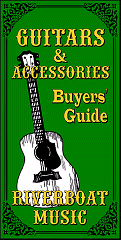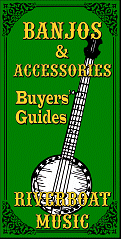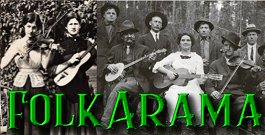
A Popular Key, Especially with Fiddlers!
| Please Read: How to Help Our Site at No Cost to You - Some of our articles contain recommendations for products we like and vendors we personally trust. Some of those vendors may pay us a very small commission if you click on a link and buy their products. This costs you nothing at all and helps offset the costs of what we do. So if we point you to something you decide to buy later, please make certain you come back through our site and click on the link directly. Thanks. |
| This Site is a Cookie-Free Zone - Except for discussion forums that you have to expressly register for, none of our pages use cookies of any kind. Some of the vendors we link to do, but that won't affect you unless you click on a link to their pages. Your continued use of this page indicates that you agree to our policy. For details, click here. |



|


A Major, the Fiddler's Friend
This is part of the "VERY Basic Guitar subset of our "How To Folk" articles. In an effort to "jump start" your enjoyment of Folk music and your ability to join in, no matter what instrument you play, we are providing some very basic notes about guitar chords.

 Note: - This part of the Folkarama page, which is dedicated to helping beginners "get into" Folk music and join Folk communities as easily as possible, with simple articles and links to resources that provide hands-on instruction in traditional acoustic instruments.
Note: - This part of the Folkarama page, which is dedicated to helping beginners "get into" Folk music and join Folk communities as easily as possible, with simple articles and links to resources that provide hands-on instruction in traditional acoustic instruments.
Folkarama, in turn, contains many references to more extensive articles and resources in Paul Race's CreekDontRise.com site, as well as other related pages.
Previously on "Basic Guitar"
Hopefully, you have already worked your way through these materials:- Meet Your Guitar - a very basic intro to holding, tuning, and picking the guitar.
- Three Magic Chords - a three-part series to introduce enough easy guitar chords to get you started on learning scores of 2-chord songs.
And you may or may not have worked through these:
- C and C9 Chords - Once you've learned the "Three Magic Chords," the C chord will help you play thousands of 3-chord songs in G, but some folks find it cumbersome at first, so we've given you a "workaround" to use while you're getting used to it.
- It's All Relative - Am and Em - The fingerings and most common uses of guitar's easiest minor chords, Am and Em. We also sneak in Am7, Em7, and Bm7 to expand your chord vocabulary.

A Major and its Friends
By now, you should be pretty familiar with A7, the D chord's most valuable sidekick. To make an A major chord, you have to add an extra finger to the chord.I call A the "Fiddler's Friend" because many classic fiddle tunes are traditionally played in the key of A.
Even if you don't play fiddle, A major is helpful if a song in G is too low to sing, but singing it it D or C (which we'll get to soon) puts it too high.
To sing "three-chorders" in A, you also need E7 (shown at the right below the A major chord). It's pretty easy to switch to. It's also a popular chord in certain Blues songs, so you'll probably need to learn it eventually anyway. 
Depending on your vocal range, nearly any "three-chorder" you can play in G can be played in A.
For practice, you can go to the Three-Chord Songs in G page Then, instead of using G, D7, and C (or C9), you use A, E7, and D.
I'm also told that the following songs work very well in A and may originally have been played in those keys.
- Pulp's "Common People"
- U2's "Desire"
- Elvis' "Hound Dog"
- Kingsmen's "Louie, Louie" (Uses Em instead of E7)
- Bob Marley's "Three Little Birds"
- The Troggs' "Wild Thing"
- Springsteen's "Glory Days"
One Minor Addition (Sort Of) - Since we've already shown you some "relative minors," such as Em being the relative minor of G, I felt like we should show you the relative minor of A - F#m.
Unfortunately, all of the "good" ways to play F#m are a little complicated.  So for today, we're just showing you a "cheater" version you can stick in if you find yourself needing an F#m in a hurry.
So for today, we're just showing you a "cheater" version you can stick in if you find yourself needing an F#m in a hurry.
To go from A major to this chord, you just need to move fingers over one string and whatever you do avoid playing the three unfretted strings.
If you want to practice this, play A and sing "Almost Heaven." Then play this cheater F#m chord and sing "West Virginia." You'll get the idea.
Conclusion
Yes, you will see lots of folks who are used to playing in G put a capo on the second fret to play in A using the G chord and its "friends." But the key of A offers flexibility in certain songs that the "capoed G" does not. And some folks just plain prefer playing in A. If nothing else, you should learn to recognize the A chord so you don't get "lost" when you're jamming with other folks.
Also the A chord is very important when you're playing in E, an important Folk and Blues key which we will present shortly in the next article.
Other Resources
Related resources include:- Meet Your Guitar - A brief introduction to the parts of the guitar and how to hold it.
- Three Magic Chords - A series of articles that get you started on basic chords you can use to play thousands of songs. Articles include:
- 3-Chord Songs in D - A list of songs you can easily play in D, using G and A7.
- What is a "Three-Chorder"? - The three-chord pattern that defines countless songs.
- More Useful Chords - "Next steps" to expand your range and enable you to play even more songs, including:
- C and C9 Chords - Once you've learned the "Three Magic Chords," the C chord will help you play thousands of 3-chord songs in G, but some folks find it cumbersome at first, so we've given you a "workaround" to use while you're getting used to it.
- It's All Relative - Am and Em - The fingerings and most common uses of guitar's easiest minor chords, Am and Em. We also sneak in Am7, Em7, and Bm7 to expand your chord vocabulary.
Other resources will be listed as I get to them.
- 3-Chord Songs in G - A list of songs you can easily play in G using G, C9 (or C) and D7.
- The Circle of Fifths - a deeper discussion of the relationships among chords, something that helps musicians quickly learn or follow new songs, or even transpose them to other keys. (This is on our sister site, CreekDontRise.com)
Sister Sites
 Other sites we started to keep this site from getting too big to be useful include:
Other sites we started to keep this site from getting too big to be useful include:
- CreekDontRise.com is a repository of articles about Folk music and the instruments on which it has been traditionally played.
The "Acoustic" page includes a long list of articles including maintenance and playing tips on all sorts of traditional acoustic instruments.
 RiverboatMusic.com is a buyers' guide for acoustic and traditional instrument from a musician's point of view, focusing on the uses, reliability, and practicality of various instruments, and not just the marketing hype about the shape of the fret markers or whatever.
RiverboatMusic.com is a buyers' guide for acoustic and traditional instrument from a musician's point of view, focusing on the uses, reliability, and practicality of various instruments, and not just the marketing hype about the shape of the fret markers or whatever.
For instruments like dulcimers that have mostly small manufacturers or cheap imports, we try to tell you what to look for, irrespective of brand.
 Momma Don't 'Low includes a free e-mail newsletter that discusses all of those topics above and more. We plan to include other features as time permits.
Momma Don't 'Low includes a free e-mail newsletter that discusses all of those topics above and more. We plan to include other features as time permits.
Note - If you wish to sign up for our newsletter and ask a question at the same time, please click on the Momma Don't 'Low newsletter button to learn more and to get a link to our signup form.
 PaulRaceMusic.com is the "landing page" for Paul's own musical endeavors, plus many memoirs and blogs about music and the music business.
PaulRaceMusic.com is the "landing page" for Paul's own musical endeavors, plus many memoirs and blogs about music and the music business.
 ClassicTrainSongs.com describes railroad songs that every train lover should know. Or at least know about.
ClassicTrainSongs.com describes railroad songs that every train lover should know. Or at least know about.
- SchoolOfTheRock.com has articles about Christian music, Christian music careers and performance, Christian living in general, and vintage saxophones, another of Paul's interests. This site has separate newsletters, etc., by the way - there isn't a lot of overlap with the Momma Don't 'Low(tm) newsletters.
For information about other music collections and projects, check the links at the bottom of this page.
 Whatever else you get out of our pages, I hope you come away with some great ideas for "sharing the joy."
Whatever else you get out of our pages, I hope you come away with some great ideas for "sharing the joy."
And please stay in touch!
All material, illustrations, and content of this web site is copyrighted (c) 2001, 2002, 2003, 2004, 2005, 2006,
2007, 2008, 2009, 2010, 2011, 2012, 2013, 2014, 2015, 2016, 2017, 2018, 2019, 2020, 2021, 2022, 2023 by Paul D. Race. All rights reserved.
Creek Dont' RiseTM is a participant in the Amazon Services LLC Associates Program, an affiliate advertising
program designed to provide a means for sites to earn advertising fees by advertising and linking to Amazon.com.
For questions, comments, suggestions, trouble reports, etc. about this page or this site, please contact us.
| Visit related pages and affiliated sites: | |||||
| - Music - | |||||

|
 |
 |

|

|

|

|

|

|

|

|

|

|

|

|

|

|

|
| - Trains and Hobbies - | |||||
 |

|

|  |
 |

|
| - Christmas Memories and Collectibles - | |||||
 |

|
 |

|
 |

|
| - Family Activities and Crafts - | |||||
 |

|

|

|

|

|

